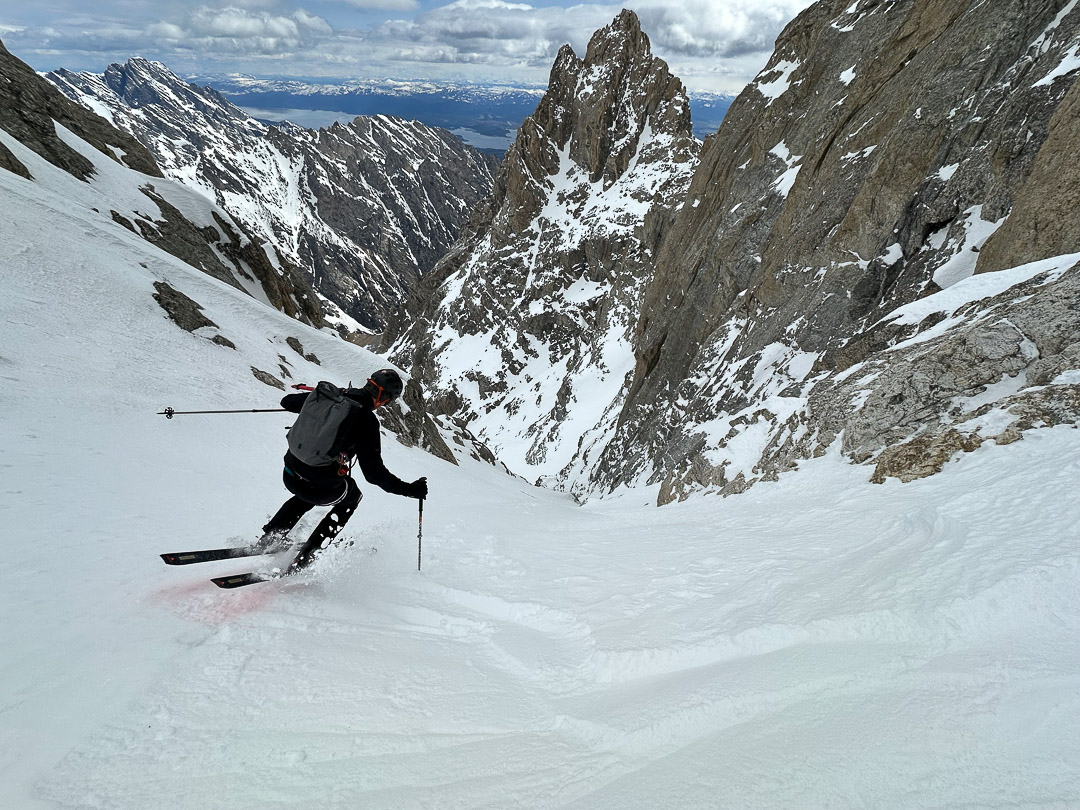Make the pucker factor in the steeps less puckery: Here are few easy steps to master the shoulder axe carry.
There are a few ways to carry an axe while descending a steep and potentially icy slope. Often, spltiboarders will descend with a single axe in hand. Whether in the front or back hand seems debatable: riders have their preference.
Some skiers use a BD Whippet; a modular axe head that screws on/off specific BD poles/grips. We won’t go into the merits of a Whippet and its use in the backcountry—some folks swear by them, others don’t. But skiing with a Whippet, for some, is part of the steep-skiing tool kit.
Most often, the axes stay put, secured on, or inside the pack.
There are situations when having quick access to a stowed axe is desirable. Imagine you’re on that big and bad and burly line you’ve eyed all spring. The first few hundred meters of turns are steep, but the snow is forgiving and edgable. Then, a few turns ahead, a slick and shiny patch of blue ice elicits the international distress signal: puckering. This is when quick and easy access to an axe is useful. An axe offers at least an option for security in some firm conditions. You might sideslip with the axe in hand, intermittently setting the pick, and methodically work through a dicey section. You might use the axe to help anchor yourself in place (you may set an ice screw, too) and switch into crampons for a safer, more efficient descent. In either case, grabbing the axe without removing your pack is essential. By grab, we mean in a few motions, lickity split, the axe is in hand.
One kind of lickty split is having a pack offering quick axe access. Conflict of interest alert; my Apocalypse Equipment pack made by THR Gear Editor Gavin Hess, features an external ice tool sleeve. I’ve descended a slope with the axe secured in the sleeve, and mid-slope snagged the axe. I’ve also done this while ascending. It’s a handy feature. (I paid full price for the pack. )
If your pack doesn’t feature an axe sleeve, which most packs don’t, there’s an easy option for accessing (or storing an already deployed) axe. Some call it the “shoulder” axe carry.





